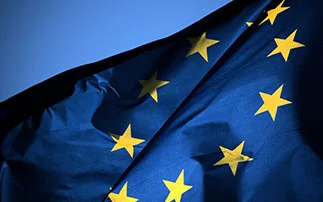The different types of European funds
The European Funds are financial tools put in place by the European Union to support its member states in various areas such as regional development, research, ecological transition, strengthening links between citizens and cooperation with non-EU countries. These funds can be used to finance local projects, research and innovation for the benefit of all stakeholders in the European Union, and European transnational cooperation projects. The European funds are divided into 3 main families, each of which operates according to its own mechanisms.
The European Structural and Investment Funds (ESIF)
The Structural and Investment Funds, which are designed to implement the European Union’s cohesion policy, represent €392 billion for the 2021-2027 programming period. They are managed by the Member States, which may delegate part of them to their regions. The largest in terms of budget are the ERDF and the ESF+.
The European Regional Development Fund (ERDF) aims to strengthen economic and social cohesion between Europe’s different regions. It provides financial support for projects that contribute to the reduction of territorial inequalities, sustainable development and job creation.
The European Social Fund (ESF+) aims to improve the social and employment situation in the EU. It seeks to promote social inclusion, facilitate professional mobility and innovate in lifelong education and training.
Other structural and investment funds have been set up by the European Union: the Just Transition Fund (JTF), to reduce CO2 emissions in the most polluting areas; the European Maritim, Fisheries and Aquaculture Fund (EMFAF); the Cohesion Fund, for the least wealthy EU countries; and the EAFRD, which aims to boost rural areas.
Sectoral programmes
The European Union has set up a number of sectoral programmes, covering various subjects such as the environment, digital technology and research and innovation. They are managed directly by the European Commission and its agencies, and operate on a model of cooperative projects involving organisations from several Member States.
Horizon Europe is the programme with the largest budget, with over €95 billion for the 2021-2027 programming period. It is the European research and innovation programme that follows on from Horizon 2020. The programme aims to strengthen research and innovation in a wide range of areas (digital, climate, health, etc.) and to promote European excellence in science. Many non-EU countries have joined or are negotiating to join the programme (South Korea, United Kingdom, India, Canada, etc.).
Erasmus+ is the European programme for education, training, youth and sport. While its best-known component is university exchanges, it also funds cooperation in innovation, the monitoring of education reforms, and European projects for meetings and cooperation in youth and sport. More than 13 million students have benefited from this programme since its inception.
The European Union provides funding for a number of other programmes: Creative Europe, for cultural issues; LIFE, which deals with ecological issues; Digital Europe, for digital and AI issues; and CERV (Citizens, Equality, Rights and Values), which aims to promote the values of the Union and bring citizens from different Member States closer together.
External cooperation funds
External cooperation funds finance actions in certain developing countries outside the borders of the European Union. The main instrument is the NDICI-Global Europe (Neighbourhood, Development and International Cooperation Instrument).
It finances the development of the EU’s neighbouring countries as well as those of the ACP (Africa, Caribbean, Pacific) via geographical instruments (European Development Fund, European Neighbourhood Instrument, etc.), but also via thematic instruments (Human Rights, Peace, Stability and Conflict Prevention, etc.) and a rapid response mechanism for crises. It has been allocated almost €80 billion for the period 2021-2027.
The Instrument for Pre-Accession Assistance (IPA III) is another pillar of the external cooperation funds. It provides support for candidate countries to the EU by helping them to integrate the ‘acquis communautaire’ and develop a resilient market economy. IPA III (2021-2027) has a budget of €14 billion.
Conclusion
Through these European funds, the European Union is ensuring the development of its territories, strengthening its industrial competitiveness and its relations with third countries, with the aim of building a prosperous future for Europe and sustainable cooperations between Member States and with the rest of the world.



